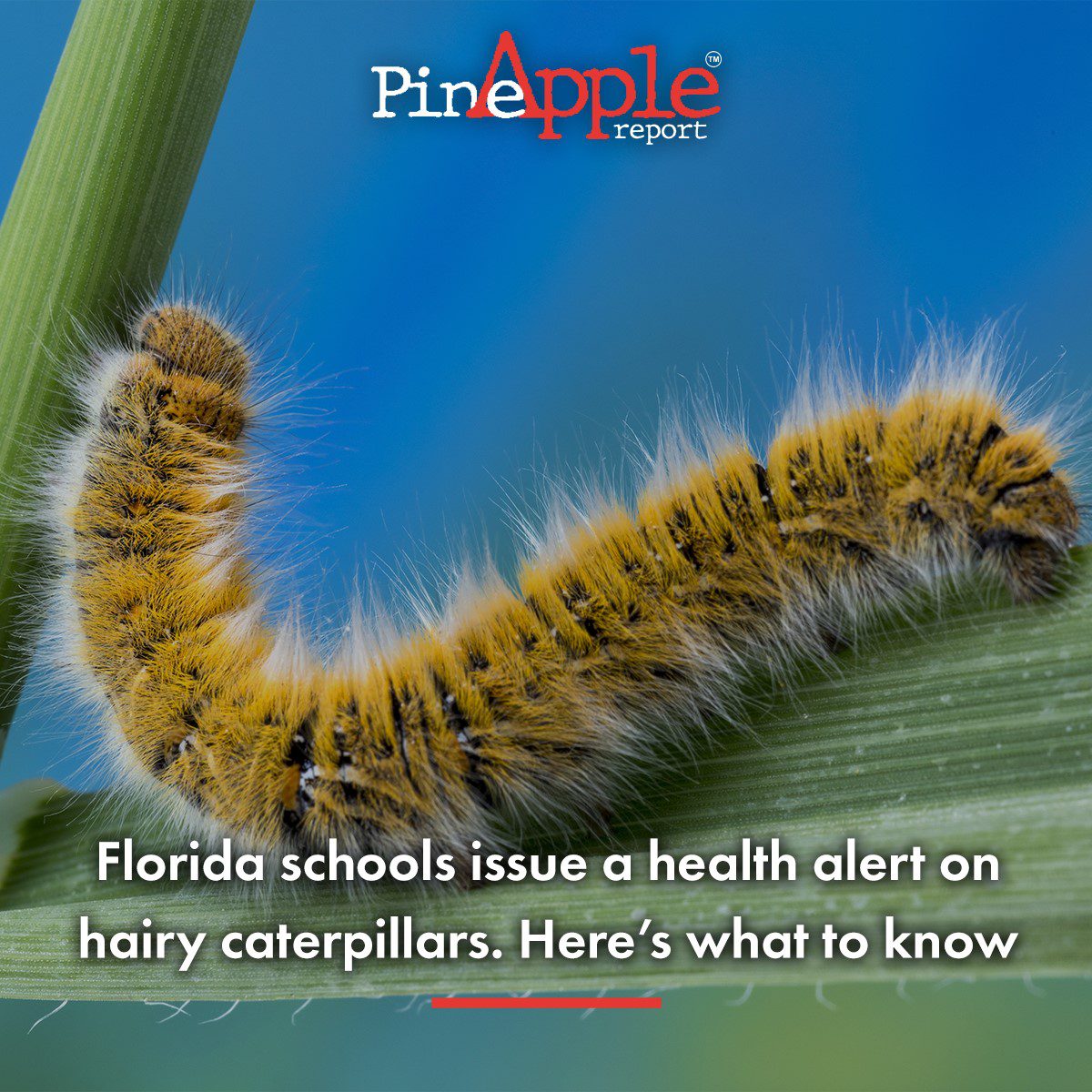Florida schools issue a health alert on hairy caterpillars. Here’s what to know
Miami Herald | by Howard Cohen | April 15, 2021
If you were a kid growing up in Florida — or have a child enrolled in school in the Sunshine State — you may remember playing with or touching fuzzy caterpillars in the recess yard. They looked and felt like little moving pipe cleaners.
Most of us have pleasant memories from the experience. But caution is also prudent.
On Wednesday, Seminole County Public Schools posted a Florida Department of Health warning on Twitter to alert parents that some caterpillars could cause nasty rashes that sting, WKMG ClickOrlando reported.
The caterpillar in question is the Orgyia leucostigma, also known as the white-marked tussock moth caterpillar.
There isn’t an outbreak of allergic reactions all of a sudden, like there was in Hillsborough County in 2011 where three clusters of rash illness were linked to the white-marked tussock moth caterpillar at two child care centers and one elementary school in the Tampa area. At least 23 children and one adult were affected.
In June 2018, a rash spread from a 15-year-old Land O’ Lakes boy’s wrist to his chest and put him in the hospital after he came in contact with a puss caterpillar.
More recently, a Dade City woman recounted the pain she felt after she came in contact with a puss caterpillar in October 2019. She wound up in the emergency room, the Miami Herald reported. “I’ve had 2 c-sections, other surgeries, and nothing came close to the pain,” the woman posted on Facebook. “It felt like someone was drilling into my bones.”
According to the University of Florida, the four major stinging caterpillars found in Florida are the puss caterpillar, saddleback caterpillar, Io moth caterpillar and hag caterpillar. These caterpillars don’t have stingers, but their hairy spines are connected to poison glands. These can cause an itching or burning sensation or more severe pain that can lead to trouble breathing and require emergency treatment.
WHAT TO DO WITH CATERPILLAR STINGS
The school system felt it was wise to flag the health department’s tips on painful encounters with the fuzzy bugs.
Among them:
▪ Get the caterpillar off your skin but try and not use your bare hands.
▪ Put tape on the exposed area, the University of Florida suggests. Carefully pull the tape up to remove any lingering hairs or spines from the caterpillar left behind on your skin..
▪ Wash the area with soap and water.
▪ An ice pack can reduce the stinging sensation, UF says, and a paste made by mixing baking soda and water can cut down on the itchiness.
▪ Contact a healthcare provider if the rash persists, or other painful systems seem to get worse.
Image: A puss caterpillar, common in Florida, can cause a rash and painful stinging sensation, health experts warn. JENNIFER ZDON AP






